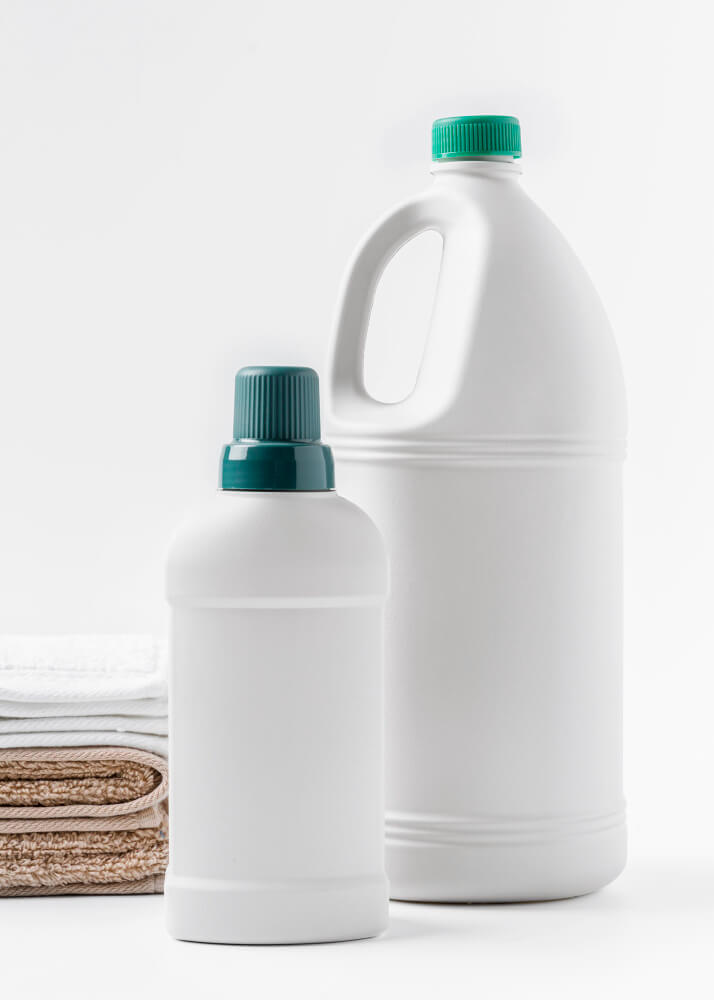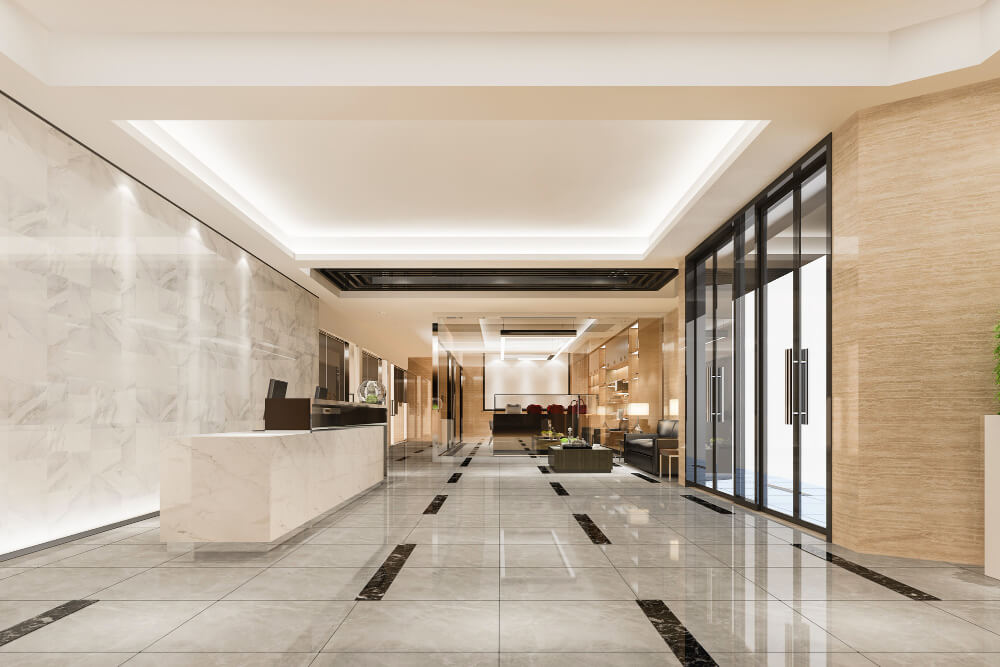Are dull, lackluster floors dragging down your business? You’re not the only one. Traffic, spills, and daily wear and tear can quickly rob commercial floors of their shine and appeal.
But don’t worry — achieving a sparkling, high-gloss finish is within reach, even for those without a cleaning crew on call.
This guide reveals the secrets to cleaning your commercial floors, making them shine, and attracting the envy of your competitors and the admiration of your customers.
Table of Contents
ToggleFirst Things First: Understand Your Floor Type
Different flooring materials need specialized cleaning and maintenance. When making your commercial floors shine, one-size-fits-all solutions don’t exist.
Here’s a quick guide on the popular types of commercial flooring:
- Vinyl: Affordable, durable, and comes in a variety of designs. It’s low-maintenance but can be prone to scratches and scuffs, especially in high-foot-traffic zones.
- Tiles: Endless design options. Whether porcelain, ceramic, or natural stone, there’s so much to choose from. They’re aesthetically appealing but can be prone to breakage under heavy loads. Can also be slippery when wet and requires regular sealing to prevent hard stains.
- Concrete: A workhorse flooring material known for durability and strength. It’s the choice of flooring to withstand heavy foot traffic and wear and tear, but it’s porous and sensitive to freezing and heating when unsealed.
- Wood: Hardwood flooring adds a rustic charm to commercial spaces. They’re durable but need frequent maintenance, including polishing and refinishing.
- Others: Less common commercial flooring options include rubber, linoleum, and epoxy coatings. Again, each has unique characteristics and specific cleaning requirements. Cleaning techniques that might work for a rental property for instance, might not be appropriate for a medical facility.
Understanding the right flooring matters because using the wrong cleaning solution or polishing products can damage your flooring, dull its shine, and worse, shorten its lifespan.
For example, using abrasive chemicals on vinyl flooring can strip it away from its protective coating. Meanwhile, aggressive scrubbing can scratch or damage expensive hardwood floors.
High-Shine Cleaning Solutions

Floor finishers or floor polishes are designed to improve the gloss and shine of commercial floors like vinyl, tile, concrete, terrazzo, and marble. They leave behind a protective layer that fills in scratches and crevices invisible to the naked eye.
High-shine cleaning solutions contain polymers or acrylics. When applied to well-prepped flooring, they form a thin, durable film that sticks to the surface. It makes the floors more resistant to wear and tear, scratches, scuffs, and other damage.
Floor finishers or floor polishes are unsuitable for hardwood and tile because of their exact opposite effect — dullness. When applied to unsealed concrete or terracotta, the solution may cause discoloration. For example,
What are some high-shine solutions for hardwood and tile?
Water-based polyurethane is ideal for hardwood floors. They can improve the natural grain of the wood and offer some shine while protecting against scratches and environmental elements.
Meanwhile, a polymer-based finish is a good choice for tile floors. It can create a high-gloss finish that protects the tiles and group from stains and wear, while also making them easier to clean.
Use Floor Buffing Machines
Floor buffers take the shine of your commercial flooring to the next level. They are designed to produce a mirror-like finish on various hard floor surfaces.
The machine works via a rotating pad that applies friction and heat on the floor’s surface. This helps smoothen out imperfections and remove scuff marks. Various types of buffing pads exist, each with unique features:
- Stripping pads are aggressive pads that are used to remove old wax or finish from the flooring before applying a new coat.
- Scrubbing pads are used alongside cleaning solutions to remove dirt, grime, and stains from the floor’s surface.
- Polishing pads are for buffing and shining the floor to a glossy finish.
- Burnishing pads are ultra-fine pads that are used for high-speed burnishing. They create a super high-gloss appearance on floors with proper surface preparation.
How to choose the right floor buffing machine
Consider the floor type, size of the facility, ease of use, and safety features when choosing a buffer.
For example, high-speed burnishers are ideal for vinyl or concrete, while slower-speed buffers are better for hardwood or stone flooring.
The machine should also be large enough to clean an entire space. A small office lobby can do with a 12-15” wide battery-powered buffer, while a warehouse may need a larger, walk-behind machine with a 20-24” cleaning path for wider coverage.
Consider the size and layout of the cleaning area to determine the appropriate machine size.
Step-by-Step Guide to Buffing a Commercial Floor
- Step 1: Surface preparation. Remove furniture, debris or obstacles from the floor, Sweep, mop, or vacuum to remove all dirt and dust. Wait for some time for the floor to completely dry before buffing.
- Step 2: Select the right buffing pad appropriate for the floor type and level of shine desired. Use a stripping pad for the removal of old wax, scrubbing pad for deep cleaning, and a polishing pad for general buffing (or a burnishing pad for high-gloss).
- Step 3: Secure the pad to the bottom of the buffing machine. Adjust the handle so it is at a comfortable height for you or the operator.
- Step 4: Turn on the buffing machine and allow it to reach full speed before cleaning. Work your way around the space by beginning from a corner. Make slow, overlapping passes with a buffer and make sure to move in a straight line for an even finish.
- Step 5: Reach small corners by using a smaller, handheld buffer or a buffing pad attached to a pole. These are areas that large machines might miss, so be prepared to have these other tools on hand.
- Step 6: After butting, use a clean mop or cloth to get rid of residue left behind by the pad. Walk around the area and assess your work from various angles to ensure there is an even shine.
NOTE: Please wear appropriate PPE (Personal Protective Equipment) at all times. Be mindful of the cord to avoid stepping on it or running it over with the buffer.
Tips to Extend the Shine of Commercial Flooring


Shiny commercial floors don’t stop when you’ve turned off the buffer machine. The real challenge lies in maintaining that shine over time.
Here are some tips:
- Have a consistent cleaning schedule to remove all types of dirt or abrasives that can dull the floor’s finish. Make regular sweeping and vacuuming a daily habit. Mop with a pH-neutral cleaner as needed.
- Place walk-off mats at the entrances of your building to trap dirt and moisture from people coming and going. Encourage employees to wipe their feet and use shoe covers in designated zones.
- Address spills as soon as they occur to prevent staining or damage to the floor’s finish. Use absorbent materials like microfiber cloths to soak up spills.
- Depending on the flooring type and traffic, you might need to reapply a floor finish every few months or years. If you’re not confident doing this on your own, a commercial cleaning company that offers floor cleaning services can help out with stripping the old finish, thoroughly cleaning it, and applying a fresh coat.
Conclusion On Buffing And Making Commercial Flooring Shine
Achieving a sparkling shine on your floors is well within arms reach with these tips. All it takes is understanding the floor type, using the right cleaning solution, buffing techniques, and implementing preventive measures.
Well-maintained flooring is an investment that pays off both in durability and aesthetics.


